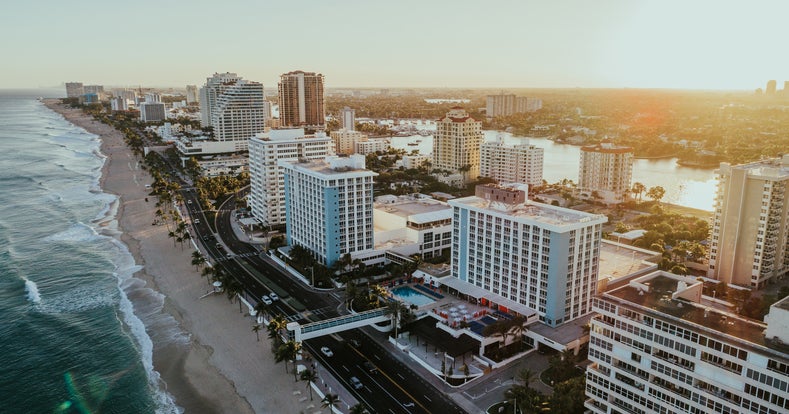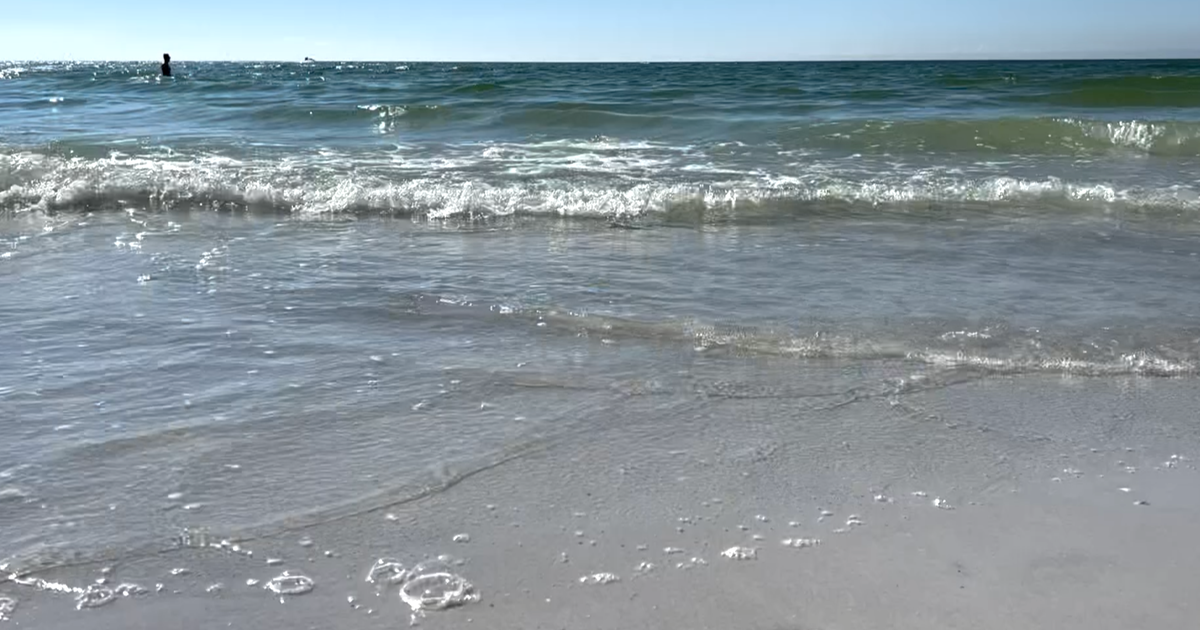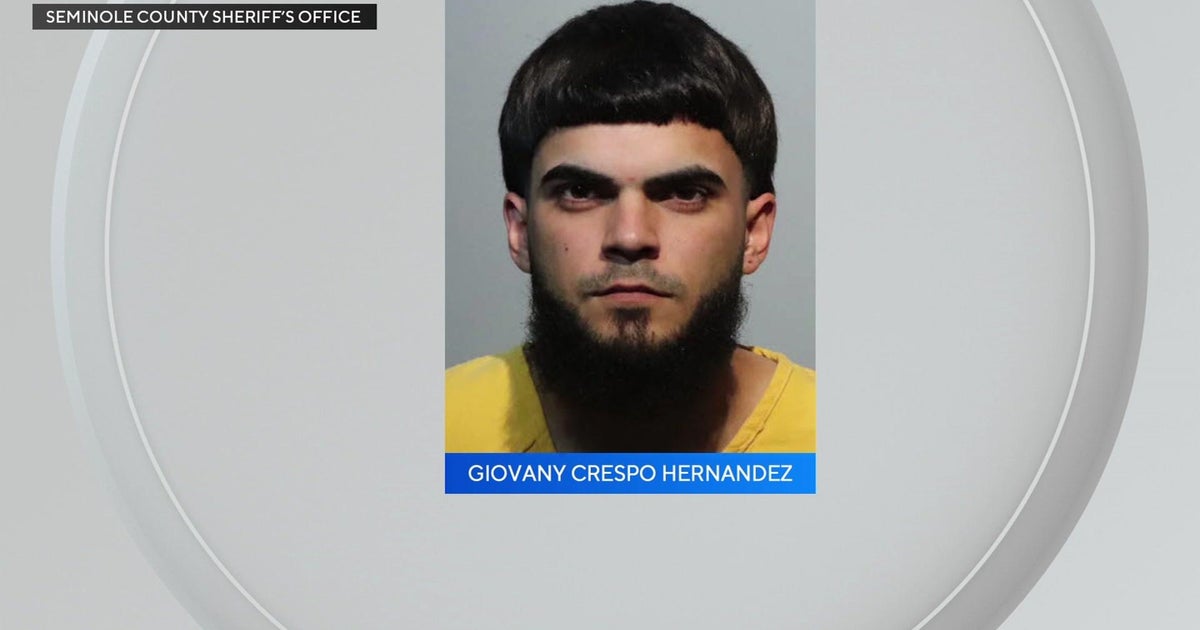Marking An End To This Hurricane Season, Here's A Look Back
Follow CBSMIAMI.COM: Facebook | Twitter
MIAMI (CBSMiami) -- Today marks the end of hurricane season and what a season it was.
We had 17 named storms. We also broke a record for having three major hurricanes make landfall in the U.S., including right here in South Florida.
For the most part hurricane season was uneventful until about late August when Harvey appeared in the Gulf of Mexico.
Hurricane Harvey
Texas communities prepared for Harvey to be a rain event. With warm waters in the Gulf, though Harvey exploded into a category 4 storm rather quickly. It made landfall in Rockport, Texas. The coastal community had many roofs rip right off.
"You got three hours of hell and then an hour lull, and then three hours of hell." said Randy Bonnett, who survived the storm in his home.
It turned out the hell was actually just starting.
As Harvey made landfall, it seemed to stop moving. Houston Mayor Sylvester Turner warned residents during a press conference the situation looked bad.
"Let me tell you it's dropping a lot of water and the streets are treacherous," Turner said.
The rain was unrelenting.
Over four days Houston saw more than 40 inches.
CBS4 Chief Meteorologist Craig Setzer looks back on the storm with a bit of disbelief.
"When computer models are calling for 30 or 40 or 50 inches, you almost have to say could this be possible? But I don't know how you can really prepare for that much rain," Setzer explained.
The fourth largest city in America disappeared beneath the water. Trucks were swept away and life for many changed instantly. About 17,000 people would be rescued.
Every day people in boats, canoes, whatever they could find, made many of the rescues. When the waters receded, tens of thousands of homeowners were left with just the clothes on their back.
Harvey made the record books as the costliest tropical cyclone ever. The latest totals are reaching towards $200 billion in damage.
Hurricane Irma
Unfortunately, Mother Nature was just getting started.
Just a week later, Hurricane Irma formed. She quickly reaching category 5 status. Winds pushing 185 miles per hour would ravage the Caribbean. The island of Barbuda was declared uninhabitable. Residents evacuated in the storm's wake. Irma was still on the move.
Gallery: Hurricane Irma In Florida Before, During & After
A week out, the National Hurricane Center was predicting landfall possible in Florida.
NHC Forecaster Michael Brennan pointed to an ominous chart.
"By Saturday night or Sunday morning, we could see Irma in the vicinity of South Florida, the Bahamas, Cuba, the Florida straits as a major hurricane," he said.
The menacing forecast threatened the entire state. A state of emergency was declared nearly a week ahead of landfall.
Setzer recalls the difficult situation.
"We were not just evacuating South Florida or Central Florida or northern Florida, or east or west coast. We were evacuating the coastal zones all the way up the peninsula," said Setzer.
The Florida Keys was first to order evacuations. Martin Senterfitt with Monroe County's Emergency Operations Center spoke candidly. He was worried.
"For the Florida Keys, if you were going to create the worst case scenario that's what we are looking at," said Senterfitt.
"Eleven hospitals would be evacuated ahead of Irma, including all of the hospitals in the Florida Keys.
Wayne Brackin, COO for Baptist Health said "We have not seen anything this ominous since Andrew."
On September 7th, a hurricane watch was issued that wrapped around the entire southern portion of the state. An estimated 7 million people tried to get out of Irma's path - the largest evacuation in Florida's history. Frustrated drivers spent up to 20 hours to drive out of the state, on a trip that would typically be about 8 hours.
"It gets horrendous. I mean just bumper to bumper," one driver said.
Intestates became parking lots. It did not matter if it was 2 p.m. or 2 a.m.
Gas stations ran dry. For those who did find gas, you waited hours to fill up. When someone cut the line, tempers flared. One man even pulled a gun on a line cutter.
As the storm approached, Florida shelters filled. Florida Keys residents, long known for not evacuating for storms, panicked.
"I'm nervous because a lot of the people I wanted to help rescue chose to stay behind," one man told CBS4 as he evacuated around 2 a.m.
Irma made landfall as a category 4 hurricane near Big Pine Key on September 10th.
The wind tossed trailers and tore off roofs. However, the storm surge really wrecked the Keys. Boats were thrown around like toys. Homes and roadways crumbled.
US-1, the only road that connects the Keys broke into pieces in many places.
The sand beneath the roadway washed away by storm surge.
One homeowner, seeing his oceanside home for the first time, soaked it in. He anticipated it actually being worse.
"We've got the walls up. We can always rebuild it. But hey, you live on the ocean. You got to take the chances," he said.
As the storm pushed North, Brickell became waist deep in storm surge. Two construction cranes attached to developments crumbled and trees toppled in just about every South Florida community. Irma made a second landfall in Naples and moved up the state.
The hurricane left much of the state in the dark. More than 4 million FPL customers were without power.
"This is the first time in our company's history that we've had all 35 counties, 27,000 square miles of our service territory hit," FPL's CEO explained.
An army of lineman entered Florida to restore power. For some, power came back in just days. For others, it took several weeks. Coral Gables sued FPL over it.
Gables Mayor Raul Valdes-Fauli said FPL should have done better.
"We want our infrastructure, our 60-year-old transformers to be updated. We want for the poles not to break because of old age," said Valdes-Fauli.
Then there were those where the power came too late.
After spending three days in sweltering heat, someone finally discovered the horror occurring in the Hollywood Hills nursing home when 150 seniors were rushed to area hospitals, many with temperatures over 102 degrees. At a press conference outside Memorial Hospital, we learned the situation was grave.
"Three individuals were found deceased on the second floor of the facility."
Family of the seniors began arriving at the nursing home searching for loved ones.
"I just want to know if he is one of the ones, god forbid, that passed away or where he's at," one woman said concerned. In the end, two residents died. Their deaths were ruled a homicide. The hospital management pointed fingers at the state. The state shut the facility down.
"I hope the truth comes out. It's senseless," the daughter of one of the victims said.
Florida Keys residents were frustrated as well as they camped in cars unable to return home until crews cleared roadways.
"Right now we don't know where to go," one resident yelled at authorities who blocked US-1 into Key Largo.
When they did open the roadways, it was done in phases - first Key Largo, then to Islamorada, then to Key West.
The further South you lived, the more likely there was not much to salvage.
Marty Harbin, a Monroe County police officer lost his home.
"I've been through Wilma and Rita and Katrina and I've never seen anything like this. I've never seen anything like this in my entire life," he said.
There were a lot of firsts with Irma.
There was a viral tweet showing a nun with a chainsaw, disaster relief lines that took a full day to navigate and a resilient community of Conchs where fantasy ruled over reality - at least for one weekend.
Setzer breathes a sigh of relief today. Irma was a terrifying week to be in Irma's potential path.
"The week of Irma I lost nine pounds and it was because I was just sick to my stomach thinking about what could potentially happen," Setzer recalls. "Of course I didn't share that with anybody but studying hurricanes and seeing the type of damage they can do and looking at the consisting in the models and the potential I just thought this is going to be something that will change people's lives. Thankfully, this wasn't the one."
Hurricane Maria
There is no better example of "the one" than Hurricane Maria. The storm was just short of catastrophic category five status when it hit Puerto Rico on September 20th.
The islands power and water infrastructure were wiped out.
The devastation quickly turned political as relief efforts faced a logistical nightmare. San Juan Mayor Carmen Yulin Cruz quickly made headlines as she took on President Donald Trump.
"This is the time for action. Let's not talk about the debt. The freaking debt," she said.
A few days later, Trump made an awkward visit to Puerto Rico. He tossed paper towels and compared Maria to Katrina "a real catastrophe." President Trump's visit seemed to exacerbate the situation.
"I hate to tell you, Puerto Rico, but you've thrown our budget a little out of whack because we've spent a lot of money on Puerto Rico," he said during his visit.
Two months after Hurricane Maria more than half of Puerto Rico is still without power. Estimates are it will be 2018 before power is on for everyone, perhaps just in time for the next hurricane season.
The 2017 hurricane season will go down as the most expensive season yet with more than $350 billion in damages.
For Florida, who had not had a major storm make landfall since 2005, Wilma, it was a wakeup call. Power, evacuations, fuel, shelters - all of them struggled at points.
One can hope that lessons learned this year will make us better prepared for next summer.



